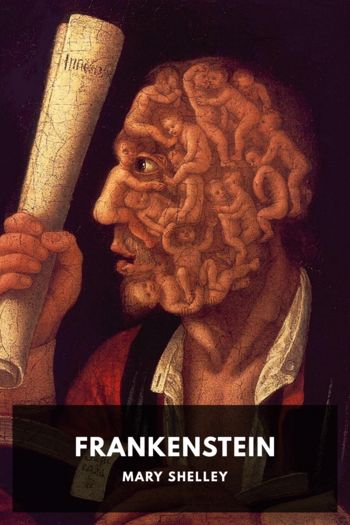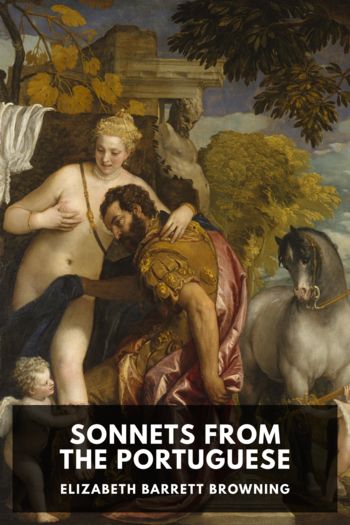Two-Way Mirror Fiona Sampson (best romance ebooks .txt) 📖

- Author: Fiona Sampson
Book online «Two-Way Mirror Fiona Sampson (best romance ebooks .txt) 📖». Author Fiona Sampson
p. 83
The Office of Commissioners of Compensation announced compensation conditions with a set of General Rules governing ownership of slaves on 31 March 1834, and the compensation pot in the London Gazette on 18 April 1834. Marks, The Family of the Barrett, p. 444.
‘Of course you know…’ #481.
p. 84
‘Veneering…’ EBB to Mitford 5 April 1845, #1880.
For a full account of ‘Handsome Sam’’s case, see Robert A. Barrett, ‘Note on Barrett v Barrett’ in Browning Society Notes, vol. 22 (December 1994), pp. 61–68.
‘A cousin came…’ Mitford to Lady Dacre 3 July 1836, SD804. ‘Papa has been away from us in London, six weeks this summer. I was glad of it, as it seemed to bring him a pleasant variety to what I fear he sometimes feels as monotony.’ #488.
p. 85
‘Without him…’ EBB to Julia Martin 19 December 1834, #493.
Treppy uses the term ‘black’: for example, a letter from her and Elizabeth’s brother Sam to Henrietta MB 20 July 1828, SD667.
‘She has nursed…’ EBB to RB 2 June 1846 (2), #2395. UCL Legacies of British Slave-ownership https://www.ucl.ac.uk/lbs/person/view/23359 [retrieved 27 September 2019].
p. 86
For nuanced discussion of EBB’s Congregationalism see Karen Dieleman, Religious Imaginaries: The Liturgical and Poetic Practices of Elizabeth Barrett Browning (Athens, Ohio: Ohio University Press, 2012), pp. 25–29.
‘Madness!…’ EBB to Miss Mitford 12 November 1842, #1047. Soliciting letters: EBB to Lady Margaret Cocks 14 September 1834, #488; EBB to Julia Martin 19 December 1834, #493.
Friendship with Hunter: this time it may even be Elizabeth who holds the upper hand. As her relationship with RB is beginning, EBB will write: ‘Half the acidities arise from the cream of his affection for me turning sour in a thunderstorm of jealousy, … not of me … but of others in relation to me! […] Poor Mr Hunter is irritable, as persons of great sensibility under adverse circumstances, are apt to be.’ EBB to Mitford 5 April 1845, #1880.
p. 87
‘My poem on the cholera. I think I like it, & shall send it to the Times tomorrow.’ Papa calls it ‘beautiful, most beautiful’. EBB Diary, 9 January and 22 January 1832.
Boyd, in usual passive-aggressive style, first pours cold water on the idea of publishing Prometheus Unbound, then two days later denies doing so. EBB Diary, 2–18 February 1832. Review in The Athenaeum Journal of Literature, Science and the Fine Arts (London: J. Francis, 1833) p. 362. The accompanying poems are pretty much ignored. Elizabeth retains them as ‘Juvenilia’ in collected editions of her Poetical Works, but comes to see ‘Prometheus’ as, in the words of a future editor, ‘an offence against Aeschylus’, eventually retranslating. ‘The second translation was deliberately intended to efface the first.’ Frederic G. Kenyon, ‘Editor’s Preface, 1887’, in The Poetical Works of Elizabeth Barrett Browning (London: John Murray, 1914), p. vi.
Boyd leaves Sidmouth in May 1834, almost exactly a year after Prometheus Unbound had appeared.
‘A nest…’ EBB to Miss Commeline 14 September 1834, #489.
Three more poems appear in The New Monthly and three in The Athenaeum. Reprinted, some with modified titles, in The Seraphim.
p. 88
Poetic homage is itself a feminine tradition: Hemans wrote ‘The Grave of a Poetess’ after the death of Mary Tighe (1772–1810).
‘I shall not be pained in leaving Sidmouth, as some time ago, I should have been. […] And after all, I would rather go to London, than to an hundred places I could mention.’ EBB to Lady Margaret Cocks c.4 November 1835, #513.
Dating Bro’s return: in #513, his return is ‘lately’. EBB to Boyd c.October 1825, #511, which records his arrival, is the second letter after Annie Boyd’s July 1835 visit to Sidmouth and also the second to mention a possible move to London.
p. 89
‘Capacities for living… The sea shore…’ EBB to Lady Margaret Cocks 9 December 1835, #516. ‘Mummy…’ EBB to Julia Martin, 1 January 1836, #519. Chimney: EBB to Julia Martin 7 December 1836, #546. Doves: EBB to Mitford 10 August 1836, #534. We learn that they’re from Jamaica in EBB to Mitford 8 November 1837, #596.
p. 90
Coughs: EBB to Boyd 7 January 1836, #520; EBB to Boyd 15 March 1836, #524.
Kenyon: ‘References to him occur in Southey’s Life, Ticknor’s Life, Letters, and Journals, L’Estrange’s Life of Mary Russell Mitford, Horne’s Letters of Elizabeth Barrett Browning, Ingram’s Life of Elizabeth Barrett Browning, Crabb Robinson’s Diary, Clayden’s Rogers and his Contemporaries, Macready’s Reminiscences, Field’s Old Acquaintance …’ James McMullen Rigg, ‘John Kenyon’ in Dictionary of National Biography 1885–1900, vol. 31 https://en.wikisource.org/wiki/Kenyon,_John_(DNB00) [retrieved 5 March 2019]. Later, he also helped Coleridge’s family financially.
Robinson: Charles R. Mack, Ilona Schulze Mack, eds, Like a Sponge Thrown Into Water: Francis Lieber’s European Travel Journal of 1844–1845: a Lively Tour Through England, France, Belgium, Holland, Germany, Austria, and Bohemia: with Observations on Politics, the Visual and Performing Arts, Economics, Religion, Penology, Technology, History, Literature, Social Customs, Travel, Geography, Jurisprudence, Linguistics, Personalities, and Numerous Other Matters (Columbia, South Carolina: University of South Carolina Press, 2002), p. 121. Barred from Oxbridge as a Nonconformist, Robinson helped found the University of London. Thomas Sadler, ed, Diary, Reminiscences, and Correspondence of Henry Crabb Robinson (London and New York: Macmillan & Co., 3rd Edition with Corrections and Additions, 1872), vol. 2, chapter XXXII, ‘3 May 1828’, p. 54.
p. 91
‘Lions…’ Sadler, ed, Diary, Reminiscences, vol. 3, p. 451, fn.
Talfourd is at Middle and George at Inner Temple. Talfourd has just been created a serjeant, a member of a juridical order dating back to the fourteenth century, and elected the MP for Reading: like George, he’s a barrister. Indeed, the two men will become friends.
p. 91
Talfourd’s first night, on 26 May 1836: Sadler, ed, Diary, Reminiscences, vol. 2, Chapter XXXIX, p. 176. The same group dined at 56





Comments (0)